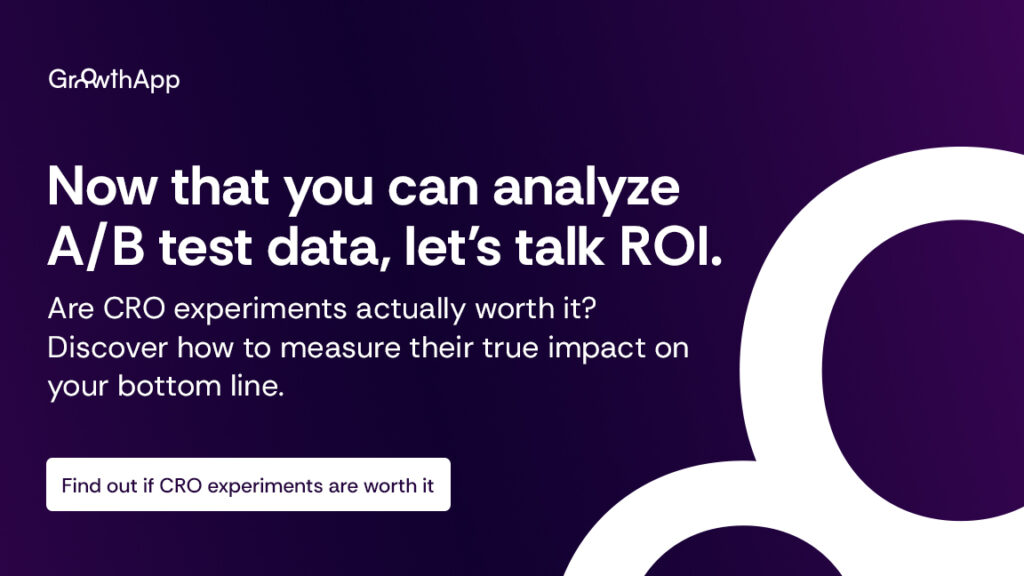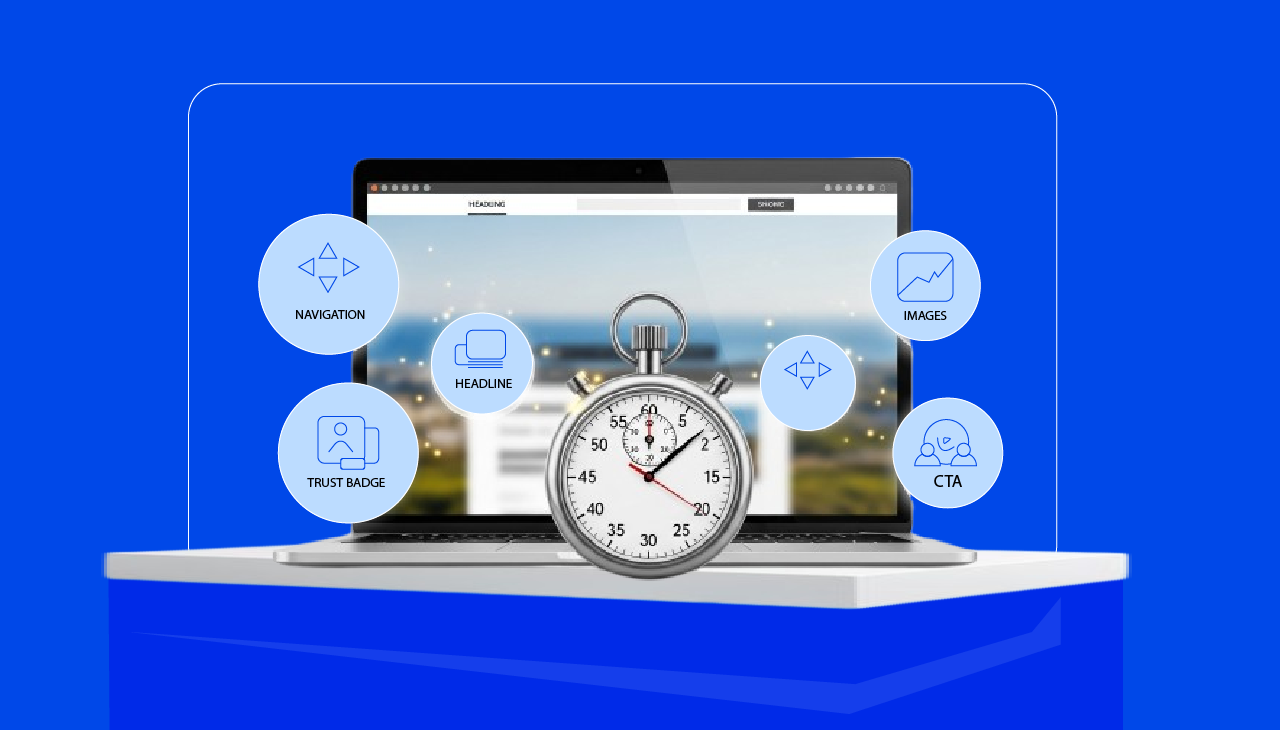A/B testing is one of the most effective tools in conversion rate optimization (CRO). It helps you determine which changes to your website or marketing campaigns will yield better results, whether that means higher conversions, better engagement, or increased revenue. But understanding how to analyze A/B test results can feel overwhelming—fast. There’s talk of statistical significance, uplift, audience segmentation, and probabilities.
There’s talk of statistical significance, uplift, audience segmentation, and probabilities. And if you’re not a data expert, this can feel like uncharted territory. The good news? You don’t need a degree in statistics to make sense of your A/B test results. By following a structured approach, you can confidently analyze your data and make smarter decisions for your business.
But before setting up or analyzing your A/B test results, you have to understand one key ingredient that determines one key ingredient that determines the whole flow of the conversation.
How do you approach A/B testing?
When it comes to A/B testing, it’s important to set it up correctly. A poorly designed test will lead to meaningless results. So, how do you go about it?
Here’s a quick rundown of what a solid A/B testing process looks like:
- Start with a clear objective.
What are you trying to improve? Is it your conversion rate, click-through rate, or average order value? Your primary metric should align with your business goals. - Pick your variations.
Decide what you’re testing. This could be a headline, CTA button color, page layout, or even pricing tiers. - Define your audience.
Choose the segment of your audience that will participate in the test. Will it be all visitors, mobile users, or new customers? - Run your test for long enough.
Avoid stopping your test too early. A/B tests need sufficient data to produce reliable results. As a rule of thumb, aim for at least two weeks or until you’ve reached a statistically significant sample size.
Once the test is complete, it’s time to analyze the data. Let’s get into how to do that without feeling lost.
Step 1: focus on the metrics that matter
When you open an A/B test report, it’s easy to feel overwhelmed. There’s a lot of data staring back at you. But not all metrics are equally important. Start by identifying your primary metric — the one thing you set out to improve. Maybe it’s conversion rate, click-through rate (CTR), average order value (AOV), or revenue per user. That’s your north star.
At the same time, don’t ignore secondary metrics. These are other data points that provide context and help you avoid making costly mistakes. For example, your primary metric might show a win, but if a secondary metric (like revenue) drops, you could be making a trade-off that hurts your bottom line.
Two key metrics you should understand:
- Uplift: This is the difference in performance between your test variation and the control group. For example, if the control group’s conversion rate is 5% and the variation is 6%, the uplift is 20%. It answers the question, “By how much did one version improve over the other?”
- Probability to Be Best: This tells you the likelihood that one variation will perform best in the long run. Unlike uplift, which can fluctuate with small sample sizes, this metric accounts for statistical uncertainty. It’s your go-to for deciding which version to roll out.
Step 2: check for statistical significance
Statistical significance is often treated as the holy grail of A/B testing. Most platforms will declare a winner when one variation has a 95% Probability to Be Best or higher. This means there’s only a 5% chance that the results are due to random noise.
However, statistical significance alone isn’t enough. Here’s why:
- It doesn’t account for practical impact. A test might be statistically significant, but if the uplift is tiny, it might not justify the cost or effort of implementation.
- It ignores audience differences. A “winning” variation for your average user might underperform for specific segments, like mobile users or high-value customers.
- Always pair statistical significance with a deeper analysis of what the results actually mean for your goals.
Step 3: analyze audience segments
Not all users behave the same way. Breaking down your results by audience segments can uncover insights that are hidden in the overall averages. Here’s what to look for:
- Device Type: Does one variation perform better on desktop versus mobile?
- Traffic Source: How do paid traffic, organic traffic, and direct traffic respond to the test?
- User Type: Are new users reacting differently than returning users?
For example, let’s say Variation A is the overall winner. But when you look closer, you notice it performs worse than the control on desktop, while dramatically outperforming it on mobile. In this case, you might decide to serve Variation A only to mobile users.
Step 4: look beyond the “winner”
It’s tempting to declare a winner and move on to the next test. But sometimes, the real value lies in the losing variations or even tests that seem inconclusive. Here’s why:
- A “losing” variation might win for a specific segment. If a variation underperforms overall but excels with high-value customers, that’s worth exploring further.
- Inconclusive tests reveal opportunities for refinement. If no variation wins, it could mean your hypothesis needs tweaking or your changes weren’t impactful enough. Use what you’ve learned to design a better test.
Step 5: consider the bigger picture
A/B testing isn’t just about picking a winner for one test. It’s about optimizing your user experience and business goals over time.
Think about long-term impact. Will implementing the winning variation drive sustainable improvements, or is it a short-term gain that could backfire?
Also, does it align with your business goals? If your primary metric improved but revenue or customer satisfaction dropped, is it really a win?
Iterate and refine. Use what you’ve learned to design better tests in the future. Testing is an ongoing process, not a one-time event.
Step 6: use the right tools
Most A/B testing platforms come with built-in analytics to help you interpret your results. These tools are designed to do the heavy lifting — calculating statistical significance, tracking key metrics, and even providing recommendations. Trust the data, but also use your judgment. No tool can fully replace critical thinking and a deep understanding of your audience.
If your platform doesn’t provide certain metrics (like Probability to Be Best), you can use external tools that have A/B testing calculators as features. Just make sure you’re working with a large enough sample size to draw reliable conclusions.
Simplifying the process with Growie
Speaking of tools that help the process a bit more easier, this is where Growie comes in.
Growie combines an AI-powered website audit, built-in analytics, and a dedicated CRO manager to help you optimize your website and interpret A/B test results with ease.
With Growie, even businesses without a dedicated data team can confidently run and analyze A/B tests. It’s like having an all in one CRO expert in your pocket.
In the end, A/B testing is a process of continuous improvement. Each test teaches you something new, whether it’s a big win, a small insight, or a lesson in what doesn’t work.
The more tests you run, the better you’ll get at interpreting the data and uncovering opportunities for growth. So don’t shy away from diving into your results. You don’t need to be a data expert—you just need a clear framework and the willingness to learn as you go.



